Daylily plants are hardy perennial plants that produce an abundance of showy flowers. Each flower lasts only a day but there are so many flowers on each plant that the prettiness can last for 30 to 45 days. Daylilies spread very easily so you will want to prepare a bed or a section of a bed that they can dominate. Because daylilies are vigorous growers they are perfect to divide and transplant. As one of my homestead projects I am creating edible landscaping. Here I will share with you when to divide daylilies, when to transplant daylilies, and how to make a bed of daylily plants for eating.
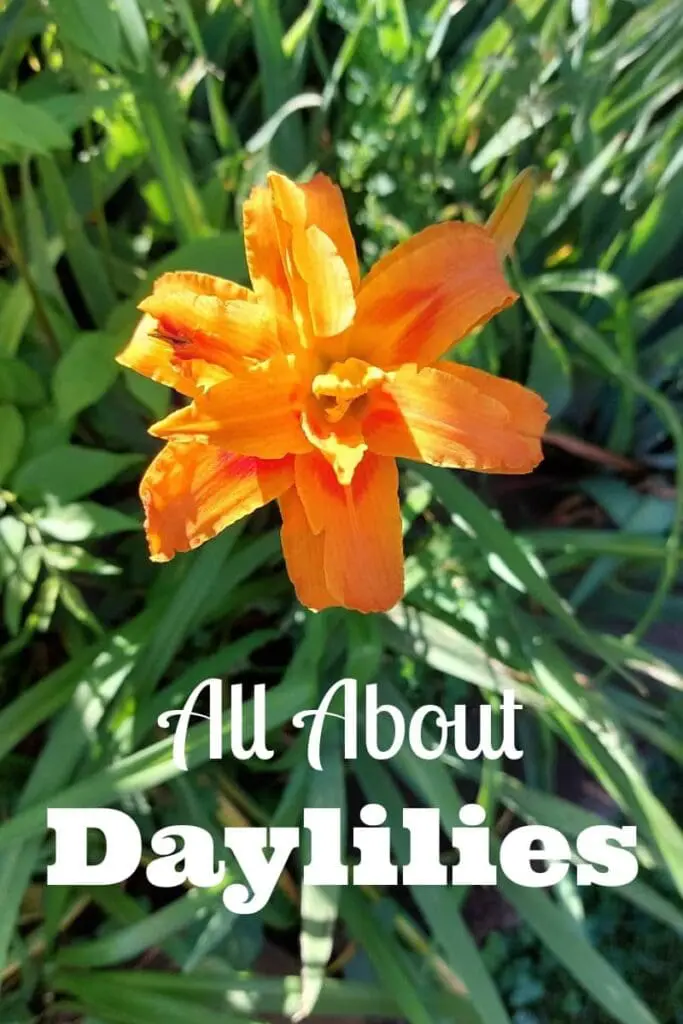
This is an orange daylily. It is a special variety called a double bloom daylily.
What Are Daylilies?
Daylilies (Hemerocallis) are popular, hardy perennial plants known for their beautiful, trumpet-shaped flowers. Orange daylilies are the most common variety but the yellow daylily is quite popular too. Daylilies will die back over the winter and but each spring the daily bulbs which have wintered underground will produce a thick growth of long, arching, grass-like leaves. Then, they will burst into star-shaped blooms.
Benefits Of Planting Day Lilies
Here are some key points you will love about daylilies:
- Easy To Grow: Daylilies are highly adaptable and can be grown in a wide range of regions. They are hardy in USDA plant hardiness zones 3 through 9, which covers most of the United States.
- Partial Sun OK: They prefer full sun but can tolerate partial shade.
- Low Water Needs: Daylily plants thrive in well-drained soil. They are adaptable to various soil types. They are fairly drought-tolerant once established.
- Low Maintenance: They are relatively pest-free and disease-resistant.
- Versatile: Suitable for borders, ground covers, and mass plantings.
- Attract Pollinators: Attractive to butterflies and hummingbirds.
- Daylilies (Hemerocallis) Are Edible: They are used in various culinary traditions, particularly in East Asian cuisine. See more below.
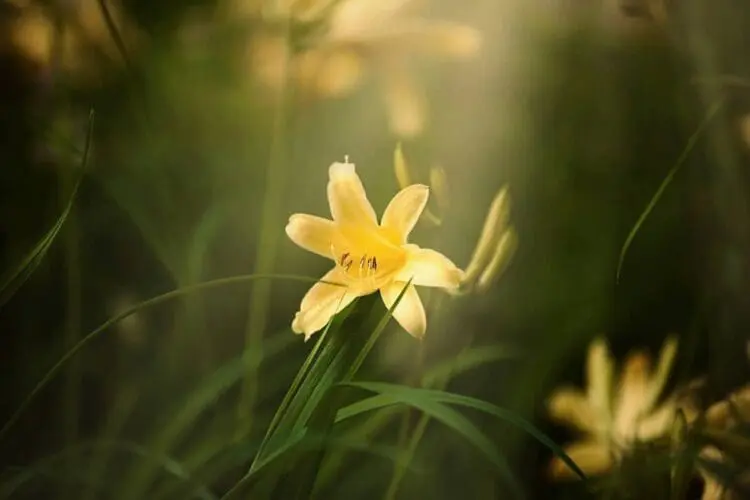
This is a typical yellow daylily.
When Do Daylilies Bloom?
Daylilies typically bloom from late spring to summer, depending on the variety and regional climate. Proper watering, fertilization, and deadheading can encourage a longer and more prolific blooming season.
- Early Bloomers: Late spring (May to early June). This is typical of most wild daylilies found here in Tennessee.
- Midseason Bloomers: Peak bloom time is mid to late summer (June to July).
- Late Bloomers: Late summer to early fall (August to September).
In warmer regions, daylilies may start blooming earlier and have a longer blooming period. In cooler climates, the bloom time may be slightly delayed. Different cultivars have different blooming schedules. When planning a garden, you can choose a mix of early, midseason, and late bloomers to extend the flowering period. Plant daylilies in a location that receives full sun to ensure maximum flower production. Use a balanced fertilizer in early spring and after the first bloom to promote continuous flowering.
Do Daylilies Spread?
Yes, daylilies spread naturally and can form large clumps over time. Daylilies spread primarily through their underground rhizomes, which are like little daylily bulbs. These horizontal stems grow outward from the parent plant and produce new shoots and roots, leading to the formation of dense clumps. While daylilies can also spread by seed, this method is less common. To control the spread and maintain healthy, vigorous plants, divide daylilies every 3-5 years.
When To Divide And Transplant Daylilies
The best time when to transplant daylilies is the early spring, before they bloom. On my daily walking route down a country road, I spotted a large young growth of daylilies. They must be escapees from a old homestead. Ideal capture! Other ideas for getting them free is ask a neighbor who has them for a few of the spring starts shooting up right now, or find them on roadside, church yards, the edge of a cemetery or public garden. Of course you will probably need to ask permission depending on the location. Alternatively, after the blooming period in late summer to early fall are also a good time for when to divide daylilies.
Dividing Daylily Plants
Dig up the clump, separate the rhizomes with a sharp knife or spade, and replant the divisions at the same depth as the original clump, spacing them about 18-24 inches apart. Plant daylilies in garden beds with barriers to prevent rhizomes from spreading into unwanted areas. Daylilies can serve as an effective ground cover, reducing weeds and adding visual interest to large garden areas.
Take with you a bucket and a small trowel or shovel. Dig up the smallish shoots with the smaller daylily bulbs. I dug up some of these daylily plants yesterday after a rain and the soil was nice and moist, making it easy to work with. I took little clumps of soil with each plant. This is good because you keep the roots in tact and can ensure a healthy take in its new location, plus you get the benefit of not having to dig as deep a hole in your prepared location you plan to transplant these plants into.
When choosing a spot in your yard or garden you may want to consider using them in borders or a sectioned off area where they won’t be competing with other plants. Keep in mind, they do spread rapidly. I dug my daylilies in along the walkway for easy access. After I watered them, I laid some bark I found over them to help keep their soil moist while they settle in. Daylilies can be very useful in landscaping certain areas of your yard and they have an added benefit- they are edible!
Are Daylilies Edible?
Daylilies are quite edible! You can eat daylily plant tubers, young shoots, flower buds and flowers. Daylilies are a good source of vitamins A and C, as well as fiber. They also contain some protein and are low in calories.
Safety: Before eating any daylily plants, please make sure you have correctly identified the species (eating the wrong plants can be toxic and dangerous). You may wish to refer to to a field guide or honestfood.net for help with daylily identification. Additionally, some people may have a mild allergic reaction to daylilies, so it’s best to try a small amount first. Finally, do not consume daylilies treated with pesticides or other chemicals.
Ideas For How To Eat Daylilies:
- Fresh Flowers: The buds and petals can be eaten raw and add a crisp texture and slightly sweet flavor to salads.
- Cooked Flowers: Flowers are often used in stir-fries. We batter and fry the daylily flowers like tempura. We also use the daylily flowers diced in as the vegetable inside a lasagna.
- Dried Flowers: Used in Chinese cuisine, especially in hot and sour soup.
- Tubers: The tuberous roots can be cooked and eaten like potatoes. Try roasted, boiled, or sautéed.
Daylilies can add a unique and tasty element to your meals, making them not just a beautiful garden plant but also a versatile ingredient in the kitchen.
Conclusion
Daylilies are a fantastic addition to any garden due to their vibrant colors, hardiness, and ease of care. Overall, daylilies are versatile and can be successfully grown in various climates across the United States and beyond, provided their basic needs for sunlight, well-drained soil, and moderate watering are met. Do you grow daylilies? I hope you found this helpful for knowing when to divide daylilies and when to transplant daylilies as well as how they can be used as part of your edible landscaping. Have you eaten daylilies before?
Related Posts:
Native Plants Landscaping- Benefits And Tips
Transplanting Mayapples
How To Plant Blueberries
Early Spring Foraging
Poke Salad Recipe

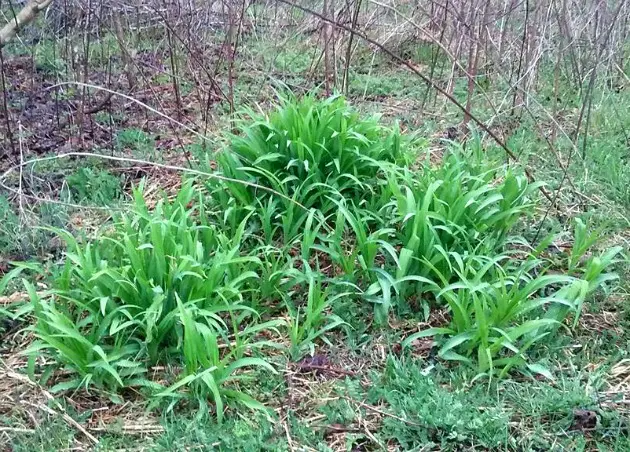
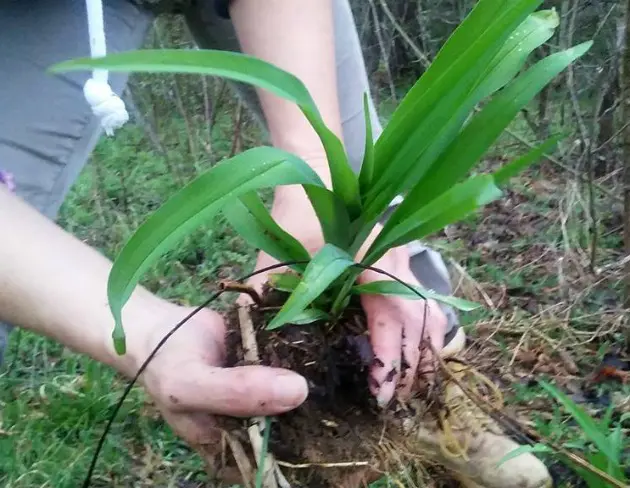
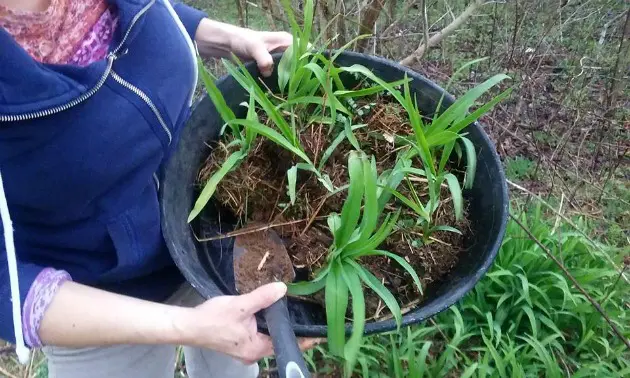
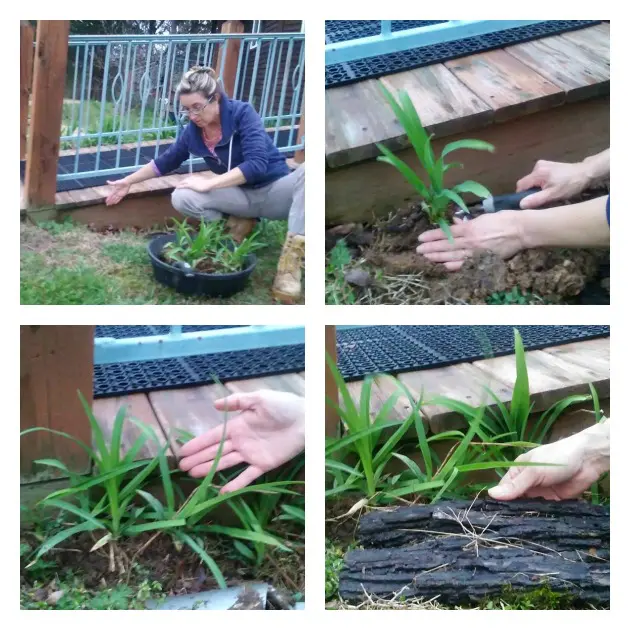
Nikki from Tikkido says
I had no idea daylilies were edible for people! So cool! I absolutely love having an edible landscape, and always keep that in mind when planting, too. I have noticed that deer do eat daylilies. Daylilies are often on the menu for deer, as they enjoy the tender foliage and flowers.